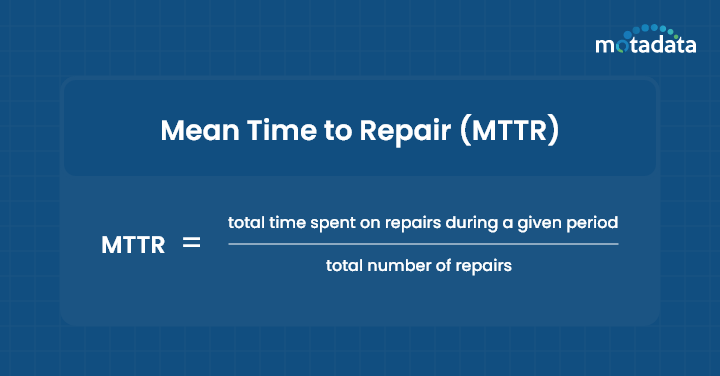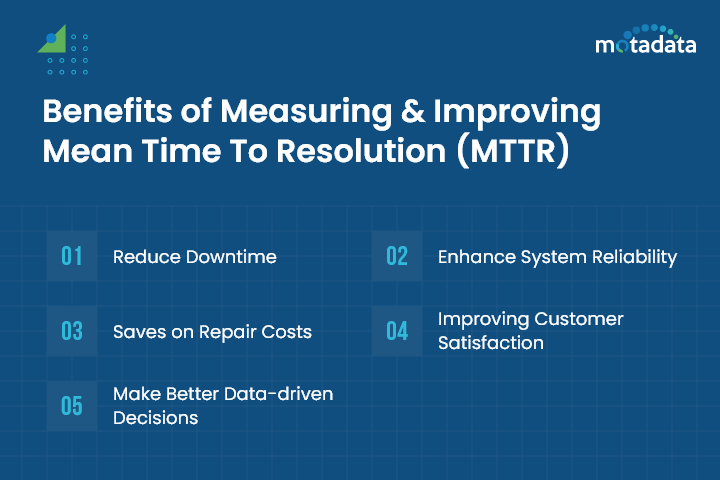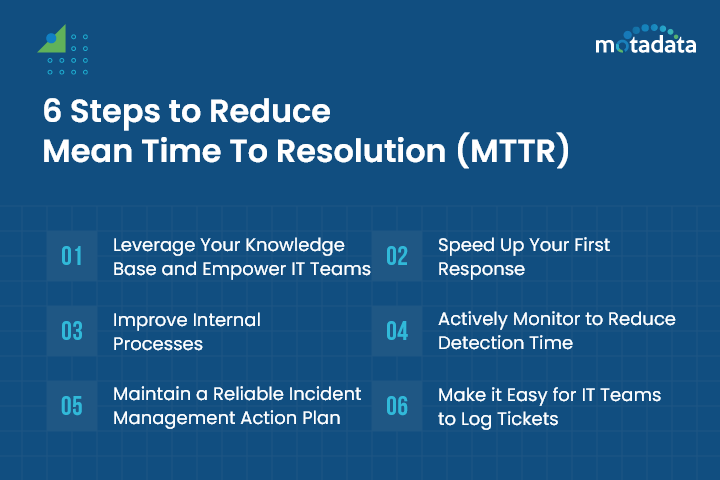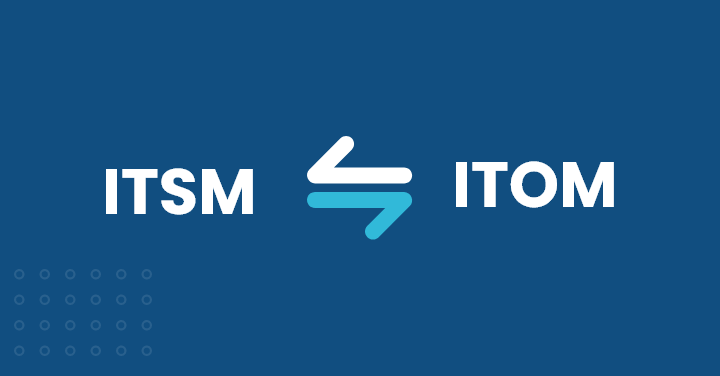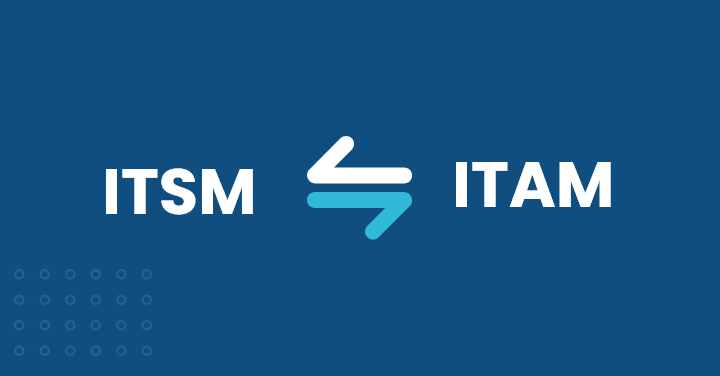Organizations striving to improve their operational efficiencies must know how to reduce MTTR as it plays a key role in today’s fiercely competitive business landscape.
Customer satisfaction is a top priority for most businesses and late response to their queries or issues can have a negative impact.
To track the response and resolution time, businesses measure their MTTR score.
MTTR is a key metric that gives insight as to how much time an organization takes to resolve an incident or issue.
Let’s delve into the concept of MTTR and understand why reducing MTTR metric is essential for businesses.
Further, we will discuss some of the best ways that will help your organization reduce its MTTR score.
What is MTTR?
Mean Time To Resolution (MTTR) is a metric used to measure a system’s ability to recover from errors and resolve a case.
It gives a quick idea of how much time your system is taking to recover and restore to its normal functions after a breakdown.
It is one of the key indicators that most organizations use to ensure a system’s reliability and assess its efficiency.
A high MTTR count indicates that your typical issue resolution procedure has several roadblocks, whereas a lower count signifies that the system can be quickly repaired.
In case of a Higher MTTR count, it is best to reconsider your recovery plan.
Several concurrent issues, traffic, incident frequency, etc. are a few factors that can affect your MTTR readings.
Thus, to fully comprehend the influence of the metric on the application utilization, it is imperative to treat these insights with proper attention.
Also, combining it with other information such as app usage, impacted users, and traffic not only gives you better understanding but also helps to reduce mean time to resolution.
Most businesses use the MTTR score to get a quick idea of how good their business is at resolving customer issues.
It’s because customers expect quality results and appreciate if a support team responds faster to their queries and provides help.
Most of the time, support teams start tracking MTTR data as soon as a consumer initiates a support request.
Why Is Reducing MTTR Essential?
Reducing MTTR is essential for a number of reasons, including:
Impact on Customer Satisfaction
Let us say you sent a query via email to the support team and immediately received a response confirming that your case is open for review. Also, shortly receive a solution to the query.
In such a case, a business displays its commitment to customer service and enhances customer loyalty.
The quick response and resolution to a case result in a lower MTTR score.
Now contrary to that if a support team takes a lot of time to review and respond, it will result in a high MTTR.
Customers may become frustrated and look for alternatives if there is frequent or extended downtime.
Hence, businesses must focus on ways to reduce MTTR as it contributes to maintaining continuous service quality.
Lower MTTR count also indicates fewer disruptions and fewer delays in the services and product delivery which further helps boost customer trust and satisfaction.
Effect on Operational Efficiency
An organization must know how to reduce MTTR and increase MTBF (Mean Time Between Failures) as they play a key role in improving operational efficiency.
High MTTR demonstrates that the time taken to respond to customer queries is long which might overall create a negative impact on productivity.
Also, longer periods result in higher expenses because of labor overtime, rush replacement part orders, and prolonged equipment downtime.
But, if you work to reduce MTTR, you can control your expenses, minimize the impact on production, optimize resource usage, and overall improve operational efficiency.
Also, you must run regular inspections and perform condition monitoring to increase MTBF and reduce repair time.
How to Calculate MTTR?
Calculating MTTR is quite easy as all you need is the total resolution time taken to resolve all tickets in a given timeframe and the number of solved tickets.
MTTR = (Total Resolution Time / Number of Solved Tickets)
Once you understand how to calculate the MTTR, you can work on the score and improve overall efficiency.
Let’s take an example to understand better how the MTTR figure is calculated.
Your support team resolved almost 1000 tickets in a month and the time taken to open the tickets came out to be a total of 22,100 minutes.
So, your monthly MTTR score will be the total resolution time divided by the number of solved tickets, i.e., 22,100/1000 or 22.1 minutes.
In simple language, your business took 22.1 minutes on average to address a customer complaint last month.
Remember, this does not imply that every problem with a vendor’s systems will be resolved in less than 22.1 minutes.
This figure just indicates that they need 22.1 minutes on average to resolve a problem.
Sometimes the time period might even exceed 22.1 due to heavy traffic or the case is a bit complex. Conversely, they may even be able to handle minor, common problems in less than 15 minutes.
When using this measure, it’s crucial to exercise caution and make sure you’re not misinterpreting anything.
It’s also crucial to keep in mind that this statistic shouldn’t be used for scheduled events like service requests or maintenance outages.
The main purpose of MTTR is to measure unplanned issue resolution.
5 Benefits of Measuring and Improving MTTR
An organization can gain a lot of benefits by simply measuring its MTTR count, such as:
1. Reduce Downtime
With the help of MTTR count, an organization can get a clear visibility into the areas that require improvement and minimize downtime.
In fact, if an employee tracks the MTTR metric over a period, he can easily track the patterns and trends in the repair process.
Based on the analysis, the team can take proper actions and improve their system availability.
2. Enhance System Reliability
With the help of MTTR metrics, team members can even track the systems that are prone to failure.
Based on this information, an organization can initiate the right steps to improve system reliability.
They can even boost system uptime and save repair time by decreasing the number of events in a particular period of time.
3. Saves on Repair Costs
Businesses may lower repair costs by increasing the effectiveness of the repair process by monitoring MTTR and pinpointing areas of improvement.
Further, users can lessen the need for expensive emergency repairs, streamline, repair processes, and train the employees on new technology.
4. Improving Customer Satisfaction
With fewer disruptions, minimum downtime, and better system reliability, an organization can satisfy its customers.
This might ultimately result in Increased client loyalty, recurring business, and positive testimonials and recommendations.
5. Make Better Data-driven Decisions
With the help of this metric, organizations can monitor the effectiveness of the repair process in a better way.
Further, it aids in pinpointing areas of improvement and making better choices regarding the upkeep and replacement of equipment.
6 Steps to Reduce MTTR
A higher MTTR score implies that your organization is taking a longer time to resolve tickets that might affect your customer experience.
So, here are the steps that one must adopt to improve their resolution times.
1. Leverage Your Knowledge Base and Empower IT Teams
Most of the time MTTR is high when an organization delivers low-quality responses.
However, with the help of a knowledge base, scripts, and playbooks, your frontline personnel can respond to customers more quickly, cutting down on the amount of time left to follow up.
2. Speed Up Your First Response
You should concentrate on your queue management if your first response times are the cause of the time-consuming resolution process.
For example, a case that takes hours to process but is resolved in minutes after it is assigned.
This may entail modifying the assignment and case routing guidelines or reevaluating your customer support scaling plan.
3. Improve Internal Processes
Resolution times might occasionally be prolonged due to the need to await feedback from other teams.
If so, you will need to collaborate with the relevant teams in your company to identify more effective ways to prioritize tasks and communicate.
4. Actively Monitor to Reduce Detection Time
You can choose from different monitoring tools in the market that will make it easier for you to identify and detect issues at an early stage.
Organizations can pre-emptively recognize any issues before they become more serious so that action and resolution can happen more quickly.
5. Maintain a Reliable Incident Management Action Plan
A well-designed strategy should integrate procedures for IT discovery, CMDB, and service mapping software, as well as defined protocols for incident response.
For streamlining the MTTR process, use tools and keep up-to-date information about your network.
This can help you portray your services and systems more accurately.
Apart from this, it also offers teams a better understanding of interactions and interdependencies among different components.
This knowledge enables any problems to be promptly located and fixed without needless delays.
6. Make it Easy for IT Teams to Log Tickets
Organizations may maintain their competitiveness and seamless operation by implementing a quick ticket logging and resolution system.
As a result, IT teams may operate more productively by reducing the time taken to log tickets.
Using this information, team members can quickly identify and address issues when they happen, saving time and money by working together to automate and streamline the ticketing process.
How to Use Motadata to Improve MTTR?
Motadata is a trusted platform that can help businesses improve their Mean Time To Repair (MTTR) with proper monitoring and analysis.
The platform offers several features that will help minimize downtime and reduce repair time.
Further, organizations can increase their uptime by proactively monitoring issues and providing IT personnel with the tools they need to handle incidents.
Using the appropriate tools for the job is crucial if you want to fully benefit from these advantages and meet your MTTR objectives.
Motadata’s user-friendly solution assists businesses in automating the identification of dynamic dependencies inside their systems.
It comes with features like IT discovery, End to End Layer Topology, Metric Drilldowns, Service Checks, Alert System, and Connection Tracing that make it easier for you to manage your entire infrastructure.
With the use of automation and AI/ML capabilities, users can extract insightful data from the logs, packets, and metrics. With the all-in-one Motadata AIOps platform, you can:
1. Streamline network operations
2. Reduce downtime
3. Spot abnormalities
Conclusion
Any business that is looking forward to improving its operational effectiveness or minimizing downtime must prioritize achieving a faster Mean Time to Resolution (MTTR).
The lower the MTTR metric, the better your response and resolution time.
As a result, customers will be more satisfied with your service and quick solutions.
Speak with our team of professionals and schedule a demo to get started on the path to operational excellence.
If you have a high MTTR metric, it is best to cultivate a continuous improvement culture and adopt proactive maintenance and new technology.
This reduces operating expenses and maximizes resource use while lessening the impact of disruptions.
In the end, a quicker MTTR not only quickly resolves urgent issues but also sets up businesses for long-term success in a dynamic and fiercely competitive business climate.
It emphasizes how crucial responsiveness and flexibility are to preserving a competitive advantage.
FAQs
It is essential for organizations to know how to reduce MTTR as it offers several benefits. Reduced MTTR means organizations can identify patterns and trends in repair times faster. Because there are fewer interruptions, this boosts output and improves customer satisfaction. Additionally, it stops problems from getting worse before they become outages and ensures that all systems are working properly. It might even have a beneficial impact on your revenue statistics and labor expenses.
For enterprises, a high MTTR is not a good sign as it demonstrates delayed responses, prolonged downtime, and less production. Frequent interruptions might eventually result in dissatisfied customers and high chances of them switching to other platforms. Also, if your resources are underutilized during repairs, operational inefficiencies might develop and expenses grow. A company’s capacity to remain competitive and adjust to shifting market conditions is further hampered by high MTTR. Additionally, when you have to pay out compensation to customers for SLA violations, high MTTR can also get costly.
Many businesses find it difficult to reduce MTTR, so here we have come up with a few strategies that one can implement and reduce mean time to resolution:
-
- Use IT discovery software to identify the components of your IT systems and services.
- Map out all of the dependencies between various services and systems using a CMDB.
- Make use of a service map to determine which parts of the system are having issues.
- Generate an effective incident-management action plan to achieve MTTR goals.
- Use automation tools to discover, identify, and fix issues faster.
- Streamline the ticketing process for IT teams.
- Streamline change management processes.
Implementing proactive monitoring and alert systems allows users to track and resolve incidents faster. These systems constantly watch over the infrastructure of an organization and report on detecting anomalies or potential failures. With quick identification, IT teams can faster initiate the troubleshooting process and solve customer issues. This approach not only helps minimize downtime but also helps reduce MTTR. It’s crucial to remember that there must be a response or fine-tuning when monitoring is done and an alert is generated. You won’t benefit much from it if no one is looking at it.
AIOps plays a key role in reducing MTTR as it automates all IT operations tasks that are time-consuming. It also increases efficiency at scale, gives visibility into your infrastructure, and makes it easier for the team to gain the insights necessary to make data-driven business decisions. It uses AI and machine learning techniques to identify, analyze, and respond to queries in real time.
Additionally, AIOps performs all root cause analysis, anomaly detection, event correlations, and potentially even remediate the issues, thus providing your team more time to focus on engaging projects. This strategy guarantees smoother and more dependable IT operations by lowering downtime, improving operational efficiency, and eventually reducing MTTR.



